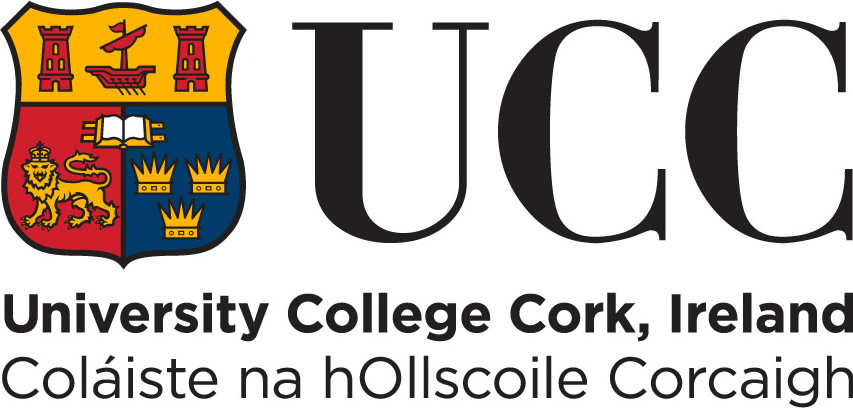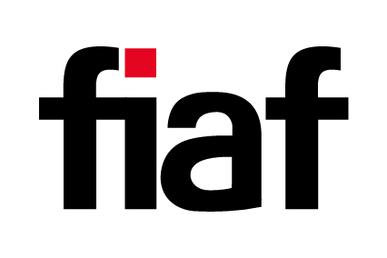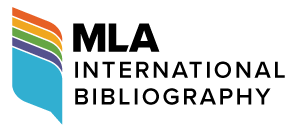Odessa Film Festival 2016: Purple Moving Images
Kamil Lipiński
The seventh edition of the Odessa Film Festival (OIFF) was held between 14 and 23 July 2016. As a young festival searching for its identity, the festival privileged not world-class film achievements, but emerging talents selected from world and Ukrainian cinema. Undoubtedly, the festival has been developed in recent years year in an attempt to progressively become a landmark of the contemporary cultural scene in Ukraine. A more positive consequence of film festivals as a global network is that they have opened up opportunities for filmmakers from traditionally “small” countries, by “levelling the playing field” (Elsaesser). In particular, by changing the image of the city, the Odessa Film Festival attempts to overshadow the fact that Ukraine is in a state of crisis in attracting new investment. OIFF attempts to revive the film culture of Odessa Film Studio, which was one of the leading studios in Eastern Europe specialising in coproductions with the Soviet Union until its twilight in the mid-1990s. Despite a difficult political situation, the Festival has started to enlarge, making progress in 2016 as it was substantially supported by the Ukrainian State Agency which promoted not only a national competition but also an international one. The question, however, was if the Festival could possibly restore the forgotten glory of Odessa’s image as a cultural centre of Eastern cinema. Leaving this question unanswered for the moment, let’s briefly mention that among the more prestigious venues that were used for screenings was the Opera Academic National Theatre and Ballet, reserved for the opening and closing ceremonies. To use Francesco Casetti’s description of relocation, the festival, trying “to preserve the old by giving it an additional opportunity, inaugurat[ed] new scenarios, new rituals, new practices, and new adventures of the body and spirit” (3). It occupied, indeed, the Potemkin Stairs for the first day of public open-air screenings, and the Langeron Descent for the other days. This relocation of the cinema also included two art venues within the Art-OIFF project curated by Alina Gordienko. The first one, entitled “Internal Film”, was exhibited in the Odessa Navy Museum and demonstrated a looped video projection of the sea as a form of “postcard” from the Odessa port. The second art venue, Galery 29, presented a film installation of unreleased fragments of sound from the archives of Jean-Luc Godard, Soundwalk Collective’s What We Leave Behind (2016).
The programme of the festival contained two complementary but disconnected thematic elements: the historical and the contemporary. Of the former, one of the most notable current trends in Ukrainian cinema is an attempt to revise national history. A historical insight can be gained from the film House with a Turret (Dom s bashenkoy, 2013) directed by Eva Nymann, who was born in Ukraine but educated in Germany where she currently lives and works as a filmmaker. At the festival, she presented an image of Ukrainian life from the time of human displacement in 1944. This film unveils the history of an eight-year-old boy who is travelling home with his mother, who however dies of typhus en-route, so he continues alone, remembering the place where she left him as a station with a turret. Having demonstrated the problem of repatriation, the black and white photography of winter scenery is enriched with beautiful landscapes and a gripping plot of the vicissitudes of life during the Second World War. The other retrospective glimpse was the history of a female assassin in My Grandmother Fanny Kaplan (Moya babusya Fani Kaplan, Olena Demyanenko, 2016), based on the findings of her granddaughter who directed the film. This film elaborates the story of the woman who wanted to kill Vladimir Lenin as a result of being embroiled in a love affair with his brother Dmitriy Ulyanov in 1917. The film suggestively unveils the political struggles against the Bolshevik revolution by women who no-one might suspect to be killers.
The final section of the retrospective was devoted to Ukrainian cinema. Amongst the many screenings, a special role was played by the presentation of The Sentimental Policeman (Chuvstvitelnyy militsioner, 1992), directed by Odessa’s Kira Muratova, who preceded her screening with a lecture. This screening caused some confusion in the audience, as the only existing print of the film from the Odessa Film Studio shows serious signs of aging. Due to used condition of the material turning the film purple was interpreted by some of the audience as a visible remnant of the Communist system.
One of the most anticipated events in the International Panorama section of the OIFF was the screening of Aleksandr Sokurov’s Francofonia (2015). It is a movie about two opponents, Jacques Jaujard, the Louvre’s museum director, and Nazi officer Count Franziskus Wollf-Metternich, both of whose aims it was to preserve the contents of the Louvre. Throughout the film, parallels are drawn between intermingling historical facts with impressions made by superimposing images of paintings with the faces of characters. The story is set against the background of the war between France and Germany and focuses on the influences of each side on the map. From a formal point of view, the blurred images are reminiscent of Peter Greenaway’s intersections of images and render the ambiguities of historical events at the beginning of the nineteenth century. This historical perspective provides an insight into the remarkable preserving of the treasures of the Louvre by means of the characters coming out of the paintings in animated moving images. One tangible characteristic of Sokurov’s film is the impression of it as played in a theatrical setting, where the entire structure takes on a strong sense of mosaic in terms of pure plastic appearance.
The second leading theme of OIFF focused on the problematisation of contemporary life in Ukraine. Particularly important is the a Ukranian/Italian coproduction, award-winning Golden Duke for the Best Ukrainian Feature: The Nest of the Turtledove directed by Taras Tkachenko (Gnizdo gorlytsi,Taras Tkachenko, 2016). The narrative focuses on a woman from a Ukranian village who decides to go to work as a housekeeper in Italy. However, she becomes pregnant as the result of a love affair with her Italian host, as her teenage daughter becomes pregnant in Ukraine at the same time. Despite a complicated relationship with her husband, her ties are strengthened with her daughter who finds herself in a similar situation. Drawing on a dialogue between two generations, this film highlights the potential consequences of paid work abroad forced by the poverty of families in some regions of Ukraine. In the short film section, one of the most stunning movies, awarded the prize of Best Duke for short movie, was It Was Showering in Manchester (Valeria Kalchenko and Antonio Lukich, 2016). This slapstick comedy of errors is about an unusually tall twenty-two-year-old man. Seen in the light of a distorted mirror, this film demonstrates the trials of a student trying to cope with his life despite his shyness and ineptitude triggered by his height.
Another illustration of social mechanisms in Ukraine was outlined in the documentary film Close Relations (Rodnye, 2017)directed by Vitaly Mansky between May 2014 and May 2015, discussing the annexation of Crimea by Russia in various regions. Travelling during this period between his family members in Lviv, Kiew and Odessa, the author shows the political consequences of the Russian–Ukrainian conflict from different perspectives. Manksy, taking advantage of visible contrasts, presents the fear of parents in Lviv, whose son is drafted into the army. On the other hand, we observe the elation of the family in the second part of the film with the entrance of Russian troops into Crimea, and the emotion caused by watching Vladimir’s Putin New Year speech on television. The intricate situations shown in this documentary explain how Crimea found itself in an unstable transitionary period as it was expelled from various European associations, including European football competitions, and the suffering on an economic level as an embargo was imposed. This film askes unanswered questions about how long it takes to transition from one country into another.
In spite of the fact that the section entitled Panorama of International Documentary was won by the French film In California by Charles Redon (La Californie, 2015), additional words of praise are deserved by The Land of the Enlightened (Pieter-Jan De Pue, 2016), produced by Bart Van Langendonck. It focuses on the lives of a gang of heavily armed children who rob people in the mountains of Afghanistan. This movie highlights the practice of stealing opium and selling it in exchange for other goods. On this basis, the children in the film anticipate what they will do when they grow up.
The choice for winner in the International Feature Competition sparked some controversy. Burn Burn Burn, directed by Chanya Button (2015), a British comedy road movie took the prize, and eclipsed the notable Greek film Suntan (2016),directed by Argyris Papadimitropoulos. The latter casts a light on a sophisticated male character going through a mid-life crisis, who becomes involved in an intricate personal relationship with a woman. Surprisingly, the Polish fantasy The Lure directed by Agnieszka Smoczyńska (Córki dancingu, 2017) was quite warmly acclaimed. It sheds new light on the story of the Sirens under the guise of modern mythology who became enrolled as striptease dancers and fall in love with humans despite the threat of turning into sea foam.
In brief, this festival served as a mirror for the Eastern Other to a West which strives to perpetuate this dichotomy, while also building an important starting point for low-budget movies for entry into the global market. “The major implication of putting film festivals at the heart of transnational cinema is thus not only that they oblige us to revise the idea of new wave and new national cinema, and that they alert us to the civic mission of the festival film” (Elsaesser). By adopting the strategy of using venues in the new areas of the city, the festival attracts the interest of new moviegoers as well as more attention from foreign film industries, leading to the development of the importance this event in Europe. However, it is still difficult to say whether the Festival can fill the gap left behind by the closing of the Odessa Film Studio. The ambitious growth of OIFF gives hope that courageous, award-winning choices, as well as a safe and comfortable infrastructure for watching moving images, will soon follow.Over the years, Odessa Film Festival has become one of the most important cultural hubs in Eastern Europe, thereby continuing the tradition of the Odessa Film Studio which is attempting to rebuild its prestige after the recent break with Russia and cessation of production in 2015 and 2016. In turn, the Odessa Film Studio became involved in local productions and started to shift its emphasis to film education. One may feel that the organisers of the Festival aim to reuse the cultural and architectural richness of the largest port on the Black Sea by offering visitors both local specialities and a global aesthetic review of international cinema. Not being indifferent to political tensions, the Festival also highlights the violation of human rights. In line with European directors such as Agnieszka Holland, Ken Loach, Mike Leigh and Pedro Almodóvar, the organisers expressed their support for the campaign for the release of Ukrainian director Oleg Sentsov who has been imprisoned in Russia. In spite of political and economic problems in Ukraine, this Festival not only aims to modernise the city, but also restore the dim glamour of the mecca of East European cinema. This is one of the organisational challenges that the young festival attempts to meet by dynamically building its brand.
References
1. Burn Burn Burn. Directed by Chanya Button, Young Button Productions, Rather Good Films production, 2015.
2. Close Relations [Rodnye].Directed by Vitaly Mansky, Studio Vertov, 2016.
3. Casetti, Francesco, The Last Supper in Piazza della Scala in Cinéma&Cie, vol. 11, 2008, pp. 7–14.
4. Elsaesser, Thomas. “Serving the Two Masters – Transnational Cinema & Antagonistic Mutuality.” 2016, Hong Kong, Keynote address.
5. Francofonia. Directed by Aleksandr Sokurov, Ideale Audience, Zero One Film, N279 Entertainment, 2015.
6. House with a Turret [Dom s bashenkoy]. Directed by Eva Nymann, Yuyu, 2013.
7. In California [La Californie] Directed by Charles Redon, The Open Reel, 2015.
8. It Was Showering in Manchester [В Манчестере шел дождь].Directed by Valeria Kalchenko and Antonio Lukich, 3KO Production, Fresh production, 2015.
9. My Grandmother Fanny Kaplan [Moya babusya Fani Kaplan]. Directed by Olena Demyanenko, Gagarin Film Company, 2016.
10. Suntan. Directed by Argyris Papadimitropoulos, Oxymoron Films, Mami Films 2016.
11. The Land of the Enlightened. Directed by Pieter-Jan De Pue, Savage Film, 2016.
12. The Lure [Córki dancingu]. Directed by Agnieszka Smoczyńska, Telewizja Polska S.A., WFDiF, Platige Image S.A., 2017.
13. The Nest of the Turtledove [Gnizdo gorlytsi]. Directed byTaras Tkachenko, Insightmedia (Ukraine), 4 Rooms (Italy) 2016.
14. The Sentimental Policeman [Chuvstvitelnyy militsioner]. Directed by Kira Muratova, Centre National de la Cinématographie (CNC), Parimedia, Primodessa Film, 1992.
15. The Soundwalk Collective. What We Leave Behind. 2017. Visual Art Installation. Private Collection.
Suggested CitationLipiński, Kamil. “Odessa Film Festival 2016: Purple Moving Images.” Report. Alphaville: Journal of Film and Screen Media, no. 17, 2019, pp. 275–279. https://doi.org/10.33178/alpha.17.28.
Kamil Lipiński is a scholar and translator at Adam Mickiewicz University of Poznań. He was awarded Unique Graduate Program at Freie Universität Berlin, Backis Erasmus Mundus Scholarship at Odessa National Polytechnic and Central European Exchange Program at Pázmány Péter Katolikus Egyetem and Central European University.









